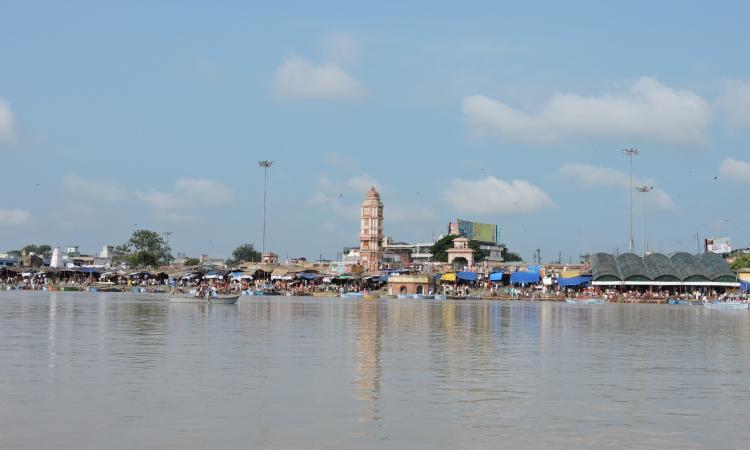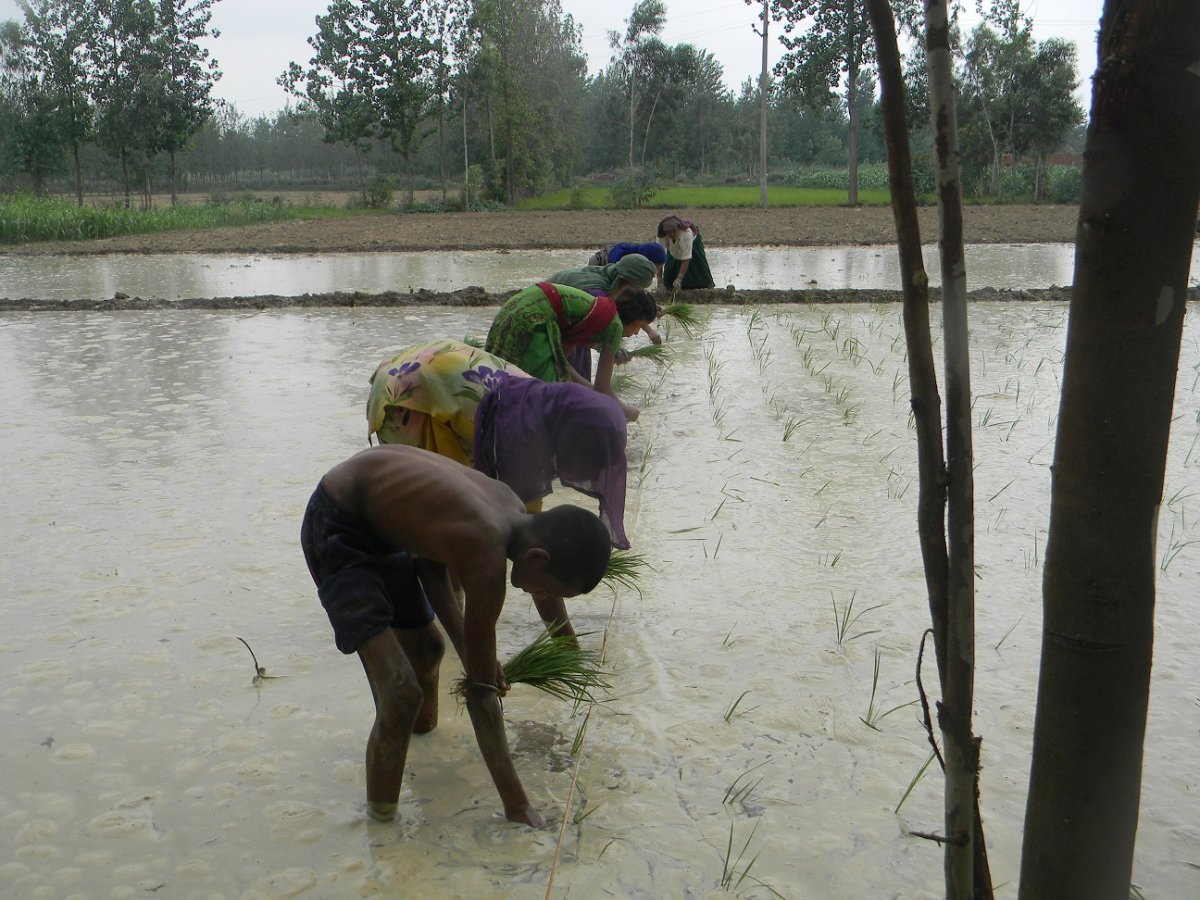
Water, its use, availability, and impact on people has been on the public policy debate centerstage for the past several years. In India, a growing water crisis driven by climate change, inefficiency, and water pollution is slowly moving to a near-permanent state that will harm the country’s people, economy and environment.
A 2018 NITI Aayog report indicated that nearly 600 million Indians face high to extreme water stress – meaning that about 2,00,000 people die every year due to inadequate access to safe water. The report went on to say that 21 cities in the country, including Delhi, Bengaluru, Chennai and Hyderabad will run out of groundwater by 2020, affecting 100 million people. Without action, there will be a 6% loss in the country’s Gross Domestic Product (GDP) by 2050.
Industrial water use
 We know that the agriculture sector uses the maximum share of India’s freshwater (around 85%), followed by the industrial and domestic sectors. However, there are varying estimates of exactly how much water the industrial sector uses depending on the reporting agency.
We know that the agriculture sector uses the maximum share of India’s freshwater (around 85%), followed by the industrial and domestic sectors. However, there are varying estimates of exactly how much water the industrial sector uses depending on the reporting agency.
According to the Ministry of Water Resources, industry accounted for about 6% of total freshwater use in 2000.
The Central Pollution Control Board (CPCB) reports that industries use around 8% of the total freshwater, and the World Bank estimates industrial water use in India to be around 13%. While we may not be sure which estimate of the water use by industries in India is accurate, one thing we know is that industrial water demand is not negligible and will continue to grow even as water supply dwindles.
While the industrial sector uses both surface and groundwater, the share of groundwater use in Indian industries is on the rise. It is important to note that India consumes about one-fourth of the globally available groundwater, more than the next two countries (US and China) combined. Nearly 89% of the groundwater extracted in India goes towards irrigation. This is followed by the domestic sector, which uses 9% of the extracted groundwater and the industrial sector which has 2% share in the groundwater use in the country.
Lower use-higher risk
While the share of water use by the industrial sector may be less than agriculture, the sector itself is extremely vulnerable in times of water scarcity – facing a high degree of physical, regulatory, and reputational risks. Even now as the crisis mounts, there have already been water-related incidences that impacted industries by limiting production, disrupting supply chains, creating conflict with other water users, and harming corporate reputations.
A report from the World Resources Institute found that water scarcity caused 14 of India’s 20 largest thermal utilities to shut down at least once between 2013 and 2016, costing these companies USD 1.4 billion.
So, it should come as no surprise that more around 60% of the industries (surveyed in a 2012 assessment by FICCI and CWC) agreed that availability of water is impacting their business.
Water stewardship approach
To address this looming crisis, we must all adopt what’s known as a water stewardship approach. This approach is predicated on the concept that water is a shared resource and so water risks are also shared risks that everyone in a catchment will face. It therefore becomes important that action to minimize water risk in a given area be based on the needs, demands, use, and goals of the area’s different user groups.
Water stewardship ensures that the use of water is socially and culturally equitable, environmentally sustainable and economically beneficial, achieved through a stakeholder-inclusive process that includes both site and catchment-based actions. Stewardship is about taking care of something that we do not own. Good water stewards recognize the need for collective responses to the complex challenges facing the water resources that nobody owns, but that we all rely on.
Industry’s response
The response of industry to minimize water risks has been positive and a lot remains to be done, and at a much faster pace if we are able to create a lasting positive impact on the state of our water resources.
To begin with, there is an increasing trend in companies disclosing their water use.
Proactive disclosure on water use by industries will go a long way in bringing in a culture of decision-making which accounts for the environmental costs of their decisions. Similar to the disclosure on energy use by industries, disclosure about water usage and trends across years will highlight industry’s commitment to conserving water.
The fact that Indian companies are using tools to assess their water risks is an indication that companies are serious about taking measures to map and find solutions to reduce their water risks. The development of the India Water Tool (IWT) by the membership of the World Business Council for Sustainable Development (WBCSD) in India and the use of other water risk mapping tools is a step in the right direction. There is a need to encourage the adoption of water risk mapping tools, in particular for water intensive industrial sectors and especially for the ones located in high water stress regions.
Lastly, companies are engaging with other water users within their catchment for not only mapping water risks but also for developing of long-term water security plans. The water security plans are being developed analyzing the state of water resources, water usage patterns, future demand, expectations of the communities. It further outlines a roadmap for addressing water risks across the different areas of water access, water quality, water conservation working in collaboration with different stakeholders.
Recently, India made it’s mark on the Alliance for Water Stewardship Standards with ITC’s Kovai Paperboards factory in Tamil Nadu getting the unique distinction of being the only facility in India to be awarded the Alliance for Water Stewardship Platinum-level certification. It is the highest recognition for water stewardship in the world.
Looking ahead
The current situation warrants all users of water to be conscious about their usage and implement measures to reduce their water footprint. In addition, the call to action for each one us is also to work within our sphere of engagement and influence to bring about an attitudinal and behavioral change about the ways we look at the availability, use and management of water resources. For businesses, it is an opportunity to demonstrate their commitment to environmental sustainability, at the same time reducing their vulnerability to changes in the external environment governed by climatic and socio-political concerns.
It is often said that tough situation calls for tough measures. Business-led water initiatives clearly indicate some forward-looking measures to address challenges relating to the water sector. These need to be rewarded and further strengthened where we create opportunities for different users of water in a catchment to work towards finding solutions to regional water problems sensitive to the needs of all users and valuing the resource fundamental to the survival and well-being of us all – WATER.
The author is Associate Director at The Institute for Sustainable Communities. Contact him here.
Disclaimer: The views and opinions expressed in this article are those of the author/s and do not necessarily reflect the policy or position of India Water Portal.
/articles/water-stewardship-approach-minimizing-risks-businesses